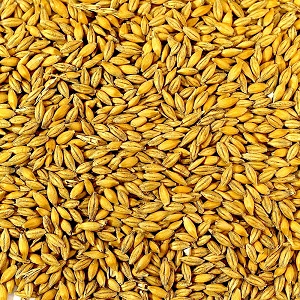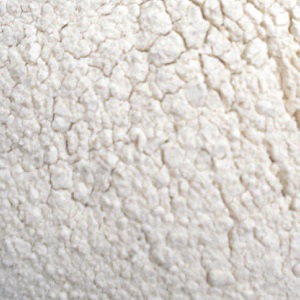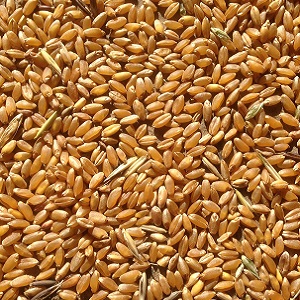Description
Barley (Hordeum vulgare L.) is one of the main cereal crops. With 150 million tons produced in 2009, barley grain production ranked fourth behind maize, rice and wheat (FAO, 2011). Developing countries account for about 25% of the total barley harvested area (Akar et al., 2003).
Barley is an annual, erect and tufted grass, up to 50 to 120 cm high. It has a strong fibrous root system, with seminal roots that grow as deep as 1.8-2.1 m and anchor the plant, and adventitious roots that explore the upper soil for moisture and nutrients (Ecocrop, 2011; UC SAREP, 2006). The stems are made of 5 to 7 hollow, cylindrical internodes. The leaves are linear and lanceolate, up to 25 cm long, placed opposite their neighbours along the stem (Ecocrop, 2011; Duke, 1983). In barley, the sheaths, ligule and auricles of the leaves surround the stem (Ecocrop, 2011). Spikes are variable in size (short or long) and shape (lax or compact). They may also be awned or awnletted or awnless; they are borne at the end of the culms. Depending on barley type, 1 or 3 spikelets are alternately borne at each node along the rachis of the spike. In domesticated barley, all spikelets are fertile: depending on the number of spikelets, there are barleys with 2 or 6 rows of grains (Cecarelli et al., 2006). Barley grain is an ellipsoid, grooved, 0.7-0.9 cm long caryopse that may be white, blue or black in colour and hairy at the end (Ecocrop, 2011; Duke, 1983).
There are thousands of cultivated barley landraces and hundreds of cultivars. Cultivars can be classified according to several factors: the number of rows of grains (2-row and 6-row), compactness of spikes, hull adherence (hulled or naked barley), presence or size of awns (awned, awnletted or awnless varieties), growth habit (winter or spring barley) and colour (white, blue or black kernels) (Cecarelli et al., 2006; CFIA, 2005; OECD, 2004). End-use may also be a way to classify barley (OECD, 2004). The average yield for barley grain is 2.7 t/ha but there are large differences between countries, from yields as high as 8.39 t/ha in Belgium to yields as low as 0.6 t/ha in Morocco and 0.2 t/ha in Lesotho (FAO, 2011).
Barley grain has three major uses: livestock feed, raw material for alcohol and starch production, and food (OECD, 2004).
Barley is of utmost importance for livestock feeding, which accounts for about 85% of barley production. Six-row barleys, which have higher protein content, are a valuable feed ingredient (OECD, 2004). Two-row barleys contain more starch and less protein and are thus preferred for brewing (barley with more than 11.5% protein causes beer cloudiness) (Monfort et al., 2005).
Barley grain is used for the production of alcohol (beer, whisky and ethanol), non-alcoholic beverages (barley tea, breakfast beverages) (OECD, 2004).
Food products include starch flour, flakes and pearled barley and it is a staple food in several countries including Morocco, India, China and Ethiopia (OECD, 2004).
The by-products of barley grain processing are used as feed: brewer’s grains, brewer’s yeast, malt culms (barley sprouts and rootlets), barley distillers and solubles, hulls, bran and barley feed (the by-product of pearl barley production) (OECD, 2004).
Barley forage can be fed to livestock as pasture, hay or silage.
Barley straw is also used as fodder for ruminants and as bedding material (OECD, 2004, Akar et al., 2003).



